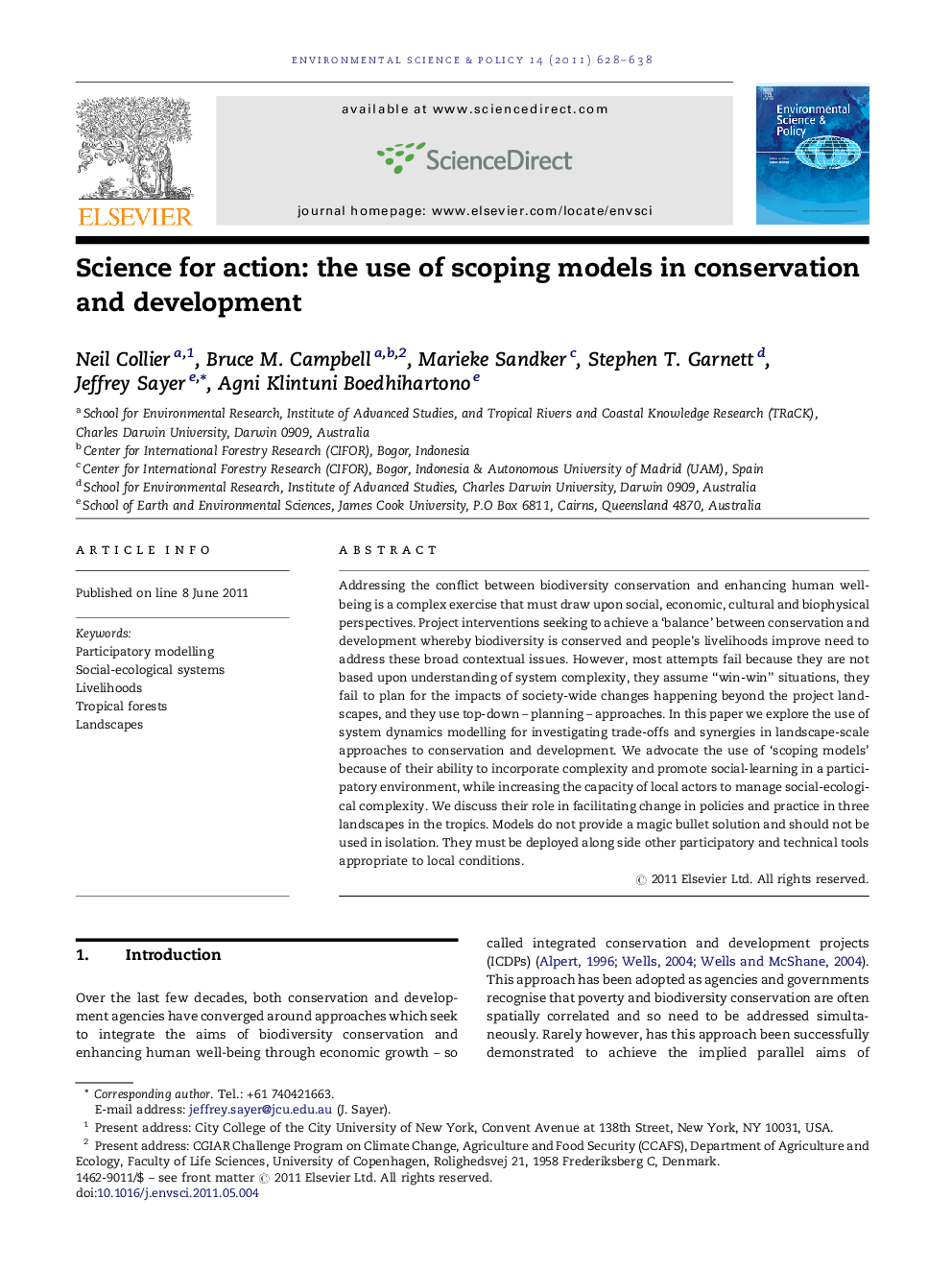| Article ID | Journal | Published Year | Pages | File Type |
|---|---|---|---|---|
| 1053889 | Environmental Science & Policy | 2011 | 11 Pages |
Addressing the conflict between biodiversity conservation and enhancing human well-being is a complex exercise that must draw upon social, economic, cultural and biophysical perspectives. Project interventions seeking to achieve a ‘balance’ between conservation and development whereby biodiversity is conserved and people's livelihoods improve need to address these broad contextual issues. However, most attempts fail because they are not based upon understanding of system complexity, they assume “win-win” situations, they fail to plan for the impacts of society-wide changes happening beyond the project landscapes, and they use top-down – planning – approaches. In this paper we explore the use of system dynamics modelling for investigating trade-offs and synergies in landscape-scale approaches to conservation and development. We advocate the use of ‘scoping models’ because of their ability to incorporate complexity and promote social-learning in a participatory environment, while increasing the capacity of local actors to manage social-ecological complexity. We discuss their role in facilitating change in policies and practice in three landscapes in the tropics. Models do not provide a magic bullet solution and should not be used in isolation. They must be deployed along side other participatory and technical tools appropriate to local conditions.
